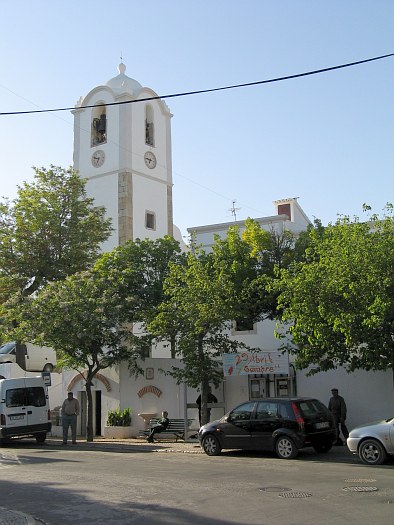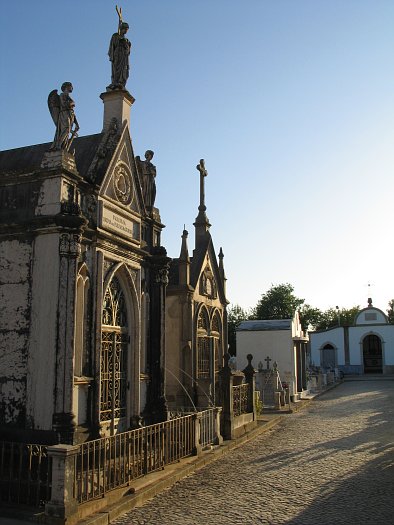Santa Bárbara De Nexe on:
[Wikipedia]
[Google]
[Amazon]
Santa Bárbara de Nexe is a village and
/ref> in an area of 38.22 km².Áreas das freguesias, concelhos, distritos e país
/ref> It is located a few kilometers from both the cities of

 Human settlement in the area of Santa Bárbara de Nexe goes back to the
Human settlement in the area of Santa Bárbara de Nexe goes back to the
civil parish
In England, a civil parish is a type of administrative parish used for local government. It is a territorial designation which is the lowest tier of local government below districts and counties, or their combined form, the unitary authority ...
in the Portuguese
Portuguese may refer to:
* anything of, from, or related to the country and nation of Portugal
** Portuguese cuisine, traditional foods
** Portuguese language, a Romance language
*** Portuguese dialects, variants of the Portuguese language
** Portu ...
municipality
A municipality is usually a single administrative division having corporate status and powers of self-government or jurisdiction as granted by national and regional laws to which it is subordinate.
The term ''municipality'' may also mean the go ...
of Faro on the southern Algarve
The Algarve (, , ; from ) is the southernmost NUTS II region of continental Portugal. It has an area of with 467,495 permanent inhabitants and incorporates 16 municipalities ( ''concelhos'' or ''municípios'' in Portuguese).
The region has it ...
region. The population in 2011 was 4,116,Instituto Nacional de Estatística/ref> in an area of 38.22 km².Áreas das freguesias, concelhos, distritos e país
/ref> It is located a few kilometers from both the cities of
Loulé
Loulé () is a city and municipality in the region of Algarve, district of Faro, Portugal. In 2011, the population of the entire municipality was 70,622 inhabitants, in an area of approximately . The municipality has two principal cities: Loulé ...
and Faro.
History
Middle Paleolithic
The Middle Paleolithic (or Middle Palaeolithic) is the second subdivision of the Paleolithic or Old Stone Age as it is understood in Europe, Africa and Asia. The term Middle Stone Age is used as an equivalent or a synonym for the Middle Paleoli ...
(around 30,000 years), and the area came to be inhabited by Pre-Roman peoples of the Iberian Peninsula
This is a list of the pre-Roman people of the Iberian Peninsula (the Roman Hispania, i. e., modern Portugal, Spain and Andorra). Some closely fit the concept of a people, ethnic group or tribe. Others are confederations or even unions of tri ...
, namely the Cynetes
The Cynetes or Conii were one of the pre-Roman peoples of the Iberian Peninsula, living in today's Algarve and Lower Alentejo regions of southern Portugal, and the southern part of Badajoz and the northwestern portions of Córdoba and Ciudad Rea ...
. Phoenicians, Roman and Arab trading routes crossed these lands across the time, where many came to occupy; the oldest historical resident identified by name was a Roman called Sextus Numisius Eros, from the 2nd century AD: his name was left behind in a local funerary stone. The area had some Phoenicia
Phoenicia () was an ancient thalassocratic civilization originating in the Levant region of the eastern Mediterranean, primarily located in modern Lebanon. The territory of the Phoenician city-states extended and shrank throughout their histor ...
n influence before being incorporated by Ancient Rome
In modern historiography, ancient Rome refers to Roman civilisation from the founding of the city of Rome in the 8th century BC to the collapse of the Western Roman Empire in the 5th century AD. It encompasses the Roman Kingdom (753–509 B ...
, became part of the Visigothic Kingdom
The Visigothic Kingdom, officially the Kingdom of the Goths ( la, Regnum Gothorum), was a kingdom that occupied what is now southwestern France and the Iberian Peninsula from the 5th to the 8th centuries. One of the Germanic peoples, Germanic su ...
of Hispania
Hispania ( la, Hispānia , ; nearly identically pronounced in Spanish, Portuguese, Catalan, and Italian) was the Roman name for the Iberian Peninsula and its provinces. Under the Roman Republic, Hispania was divided into two provinces: Hispania ...
which was ruled by Germanic peoples from Northern and Central Europe, and was conquered by the Moors
The term Moor, derived from the ancient Mauri, is an exonym first used by Christian Europeans to designate the Muslim inhabitants of the Maghreb, the Iberian Peninsula, Sicily and Malta during the Middle Ages.
Moors are not a distinct or ...
during the 8th century being incorporated into the Al'Garb Al-Andalus
Al-Andalus DIN 31635, translit. ; an, al-Andalus; ast, al-Ándalus; eu, al-Andalus; ber, ⴰⵏⴷⴰⵍⵓⵙ, label=Berber languages, Berber, translit=Andalus; ca, al-Àndalus; gl, al-Andalus; oc, Al Andalús; pt, al-Ândalus; es, ...
, a region dominated by Muslim invaders from North Africa and the Arab World in general.
The area would eventually be incorporated in the Kingdom of Portugal
The Kingdom of Portugal ( la, Regnum Portugalliae, pt, Reino de Portugal) was a monarchy in the western Iberian Peninsula and the predecessor of the modern Portuguese Republic. Existing to various extents between 1139 and 1910, it was also kno ...
during the end of the Portuguese Reconquista
The ' (Spanish, Portuguese and Galician for "reconquest") is a historiographical construction describing the 781-year period in the history of the Iberian Peninsula between the Umayyad conquest of Hispania in 711 and the fall of the Nasrid ...
against the Moors and their Muslim rule, in 1272, by King
King is the title given to a male monarch in a variety of contexts. The female equivalent is queen, which title is also given to the consort of a king.
*In the context of prehistory, antiquity and contemporary indigenous peoples, the tit ...
Afonso III of Portugal
Afonso III (; rare English alternatives: ''Alphonzo'' or ''Alphonse''), or ''Affonso'' (Archaic Portuguese), ''Alfonso'' or ''Alphonso'' (Portuguese-Galician) or ''Alphonsus'' (Latin), the Boulonnais ( Port. ''o Bolonhês''), King of Portugal ( ...
. The eldest reference to a place called "Nexe" appears in 1291 in a chart about the boundaries of Faro and Loulé.
During the 14th century, the parochial church was constructed on the site of an ancient chapel.
Santa Bárbara de Nexe became a parish in the 16th century.
Geography
Santa Bárbara de Nexe is located in the ''Barrocal Algarvio'' in a natural amphitheater on the flanks of the Serra de Monte Figo, over theRia Formosa
The Ria Formosa lagoon, located in the Algarve, in southern Portugal, is a system of barrier islands that connects to the sea through six inlets. Five of these inlets are natural and have mobility characteristics. The sixth is an artificial inlet ...
and the Atlantic Ocean.
Economy
The village is a satellite settlement of the city of Faro, the capital ofAlgarve region
The Algarve (, , ; from ) is the southernmost NUTS statistical regions of Portugal, NUTS II region of continental Portugal. It has an area of with 467,495 permanent inhabitants and incorporates 16 municipalities (concelho, ''concelhos'' or ''mun ...
. It is home to a number of bars and cafes, including Eddie's Bar, a bar dedicated to the heavy metal band Iron Maiden
Iron Maiden are an English heavy metal band formed in Leyton, East London, in 1975 by bassist and primary songwriter Steve Harris. While fluid in the early years of the band, the lineup for most of the band's history has consisted of Harri ...
by Steve Harris, the bassist
A bassist (also known as a bass player or bass guitarist) is a musician who plays a Bass (instrument), bass instrument such as a double bass (upright bass, contrabass, wood bass), bass guitar (electric bass, acoustic bass), synthbass, keyboar ...
for the group who was the founder of the bar itself.
Architecture
* Church of Santa Bárbara ( pt, Igreja Paroquial de Santa Bárbara de Nexe/Igreja de Santa Bárbara), the Manueline, Baroque and Neoclassic architectural site, developed from the 1444 chapel, supported by the Order of St. James, and recognizable by the complex Gothic-like spine vaulted ceiling in its interior and arches, and the tall vertical, square belltower; * Hermitage of Santa Catarina ( pt, Ermida de Santa Catarina), located in Gorjões, the chapel is a simple 17th century structure, includes a lateral belfrey;Culture
The Charolas in January are manifestations of the traditional culture of Santa Bárbara known across Portugal as ''cantar das janeiras'', employing popular poetry, improvisation and lack of religious symbology. At the beginning of every year, in January, the ''Charolas'', groups of men and women, accompanied by instruments (accordions, castanets, tambourines, triangles and sometimes clarinet and saxophone), play in the festivals ofBordeira
Bordeira is a Portuguese civil parish in the municipality of Aljezur. The population in 2011 was 432, in an area of 79.87 km². It lies within the Southwest Alentejo and Vicentine Coast Natural Park, along the western coast of the Algarve in ...
, Santa Bárbara de Nexe and the surrounding homes of friends and local cafés. The Charolas is the name used to describe these groups of man and women in both Alentejo
Alentejo ( , ) is a geographical, historical, and cultural region of south–central and southern Portugal. In Portuguese, its name means "beyond () the Tagus river" (''Tejo'').
Alentejo includes the regions of Alto Alentejo and Baixo Alent ...
and Algarve regions of Portugal. In other places in Portugal, these groups are just known as singing groups that sing the ''janeiras'' songs every January during the period known in Portugal as ''Reis'' (Kings). The Charolas, as well as other Portuguese ''janeiras'' singing groups across Portugal, play songs and improvised chants to mark the New Year, in a climate of friendship, solidarity and socio-political critiques.
The Charolas of Nexe, during the middle of the 20th century, reached their zenith with the accordionists of Bordeira, that included José Ferreiro and João Barra Bexiga, in addition to the popular poetry of António Aleixo and Clementino Baeta.
References
{{Parishes of Faro Villages in the Algarve Parishes of Faro, Portugal